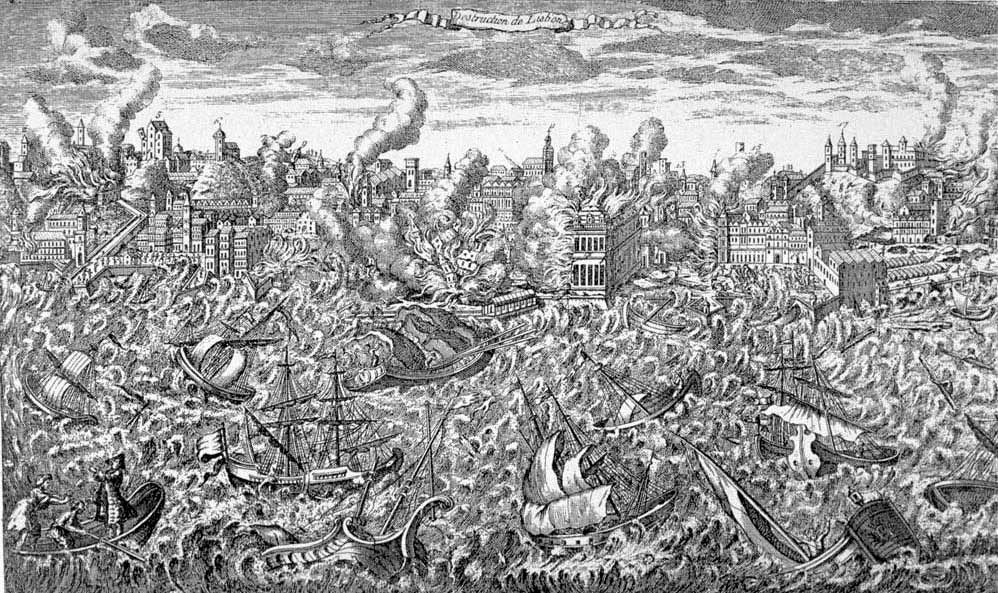A 1755 Earthquake in Portugal Left Behind a Scar on a Caribbean Island
Researchers recently discovered evidence of a historic tsunami’s true extent.

For two years, the marine geophysicist Jean Roger had been looking for traces of an old earthquake. In 1755, Portugal shook with a quake that would have topped 8.0 on the Richter scale—so large that Lisbon was leveled and the resulting tsunami wave reportedly made it all the way across the Atlantic and hit the Caribbean. But evidence proving that the wave had in fact reached that far had, thus far, been impossible to find.
As Eos reports, though, a tip from an archaeologist working in Martinique recently led Roger to exactly what he was looking for: proof of the wild reports of the power of the 1755 tsunami.
The archaeologist had come across a strange layer of sediment during a dig in the city of Fort-de-France. What they’d found was a layer of white sand a little less than half an inch thick, topped with a 3-inch layer of black sand. Based on clay shards in the surrounding layers, the researchers were able to date the unusual layers to between 1726 and 1783. The only event in that time period that could have been responsible for creating those layers was the 1755 earthquake.
The white layer, which was also full of shells, pretty clearly originated with a coral reef in the nearby bay. But, as Eos reports, the origins of that thick layer of black sand was a mystery until the researchers happened to find a black sand beach on the river that bisects the island.
The volcanic sand there was a match for the black layer. Roger and his colleagues now think that the tsunami caused a bore—essentially a giant wave that moves along a river—to sweep through mangrove drainage channels and carry the sand to the place where it was discovered. For all those years, the ground hid the evidence of the tsunami’s extent, but Roger now has the proof he was after, which shows just how large of an impact it had.










Follow us on Twitter to get the latest on the world's hidden wonders.
Like us on Facebook to get the latest on the world's hidden wonders.
Follow us on Twitter Like us on Facebook